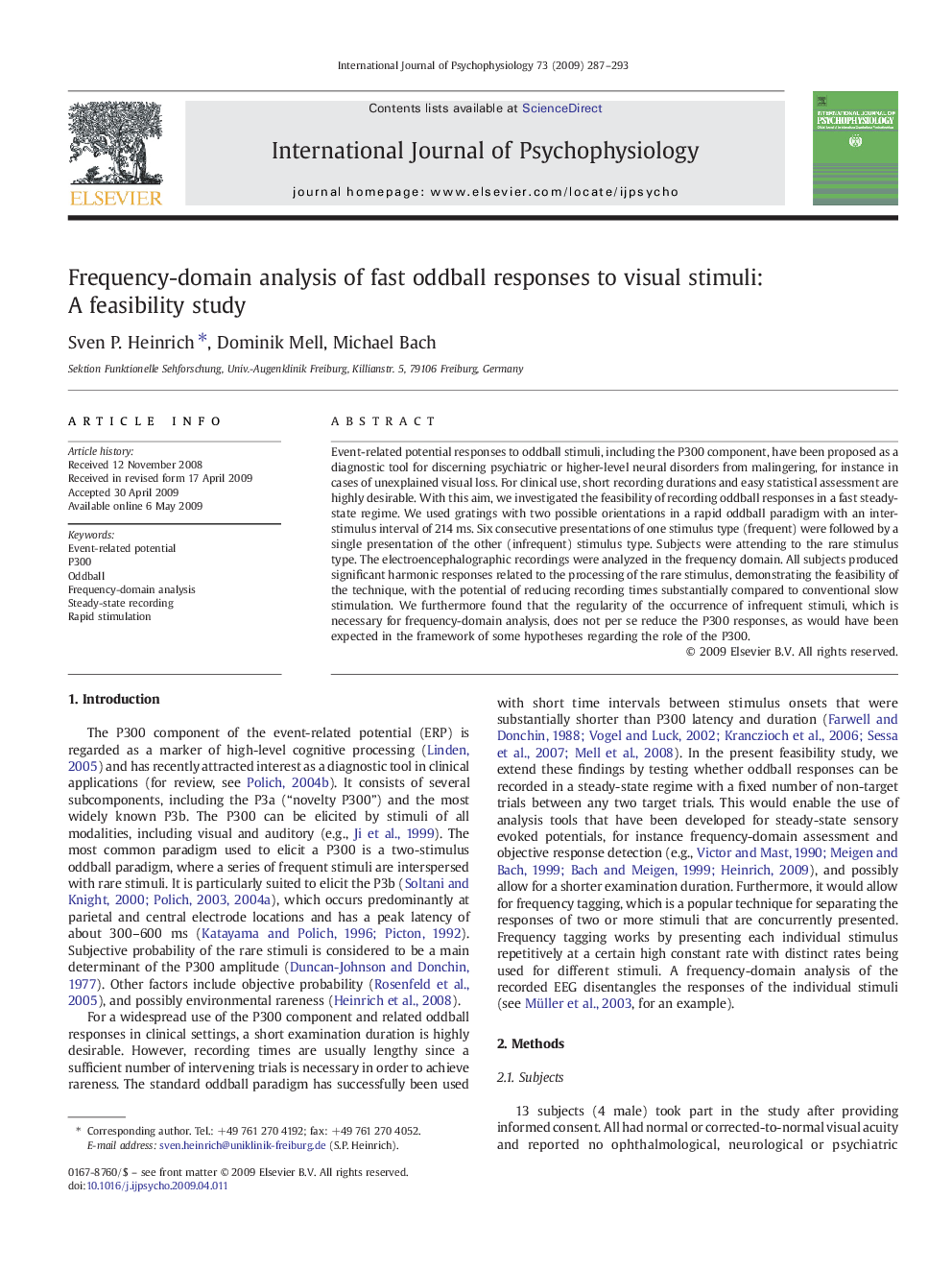| Article ID | Journal | Published Year | Pages | File Type |
|---|---|---|---|---|
| 7296438 | International Journal of Psychophysiology | 2009 | 7 Pages |
Abstract
Event-related potential responses to oddball stimuli, including the P300 component, have been proposed as a diagnostic tool for discerning psychiatric or higher-level neural disorders from malingering, for instance in cases of unexplained visual loss. For clinical use, short recording durations and easy statistical assessment are highly desirable. With this aim, we investigated the feasibility of recording oddball responses in a fast steady-state regime. We used gratings with two possible orientations in a rapid oddball paradigm with an inter-stimulus interval of 214Â ms. Six consecutive presentations of one stimulus type (frequent) were followed by a single presentation of the other (infrequent) stimulus type. Subjects were attending to the rare stimulus type. The electroencephalographic recordings were analyzed in the frequency domain. All subjects produced significant harmonic responses related to the processing of the rare stimulus, demonstrating the feasibility of the technique, with the potential of reducing recording times substantially compared to conventional slow stimulation. We furthermore found that the regularity of the occurrence of infrequent stimuli, which is necessary for frequency-domain analysis, does not per se reduce the P300 responses, as would have been expected in the framework of some hypotheses regarding the role of the P300.
Related Topics
Life Sciences
Neuroscience
Behavioral Neuroscience
Authors
Sven P. Heinrich, Dominik Mell, Michael Bach,
